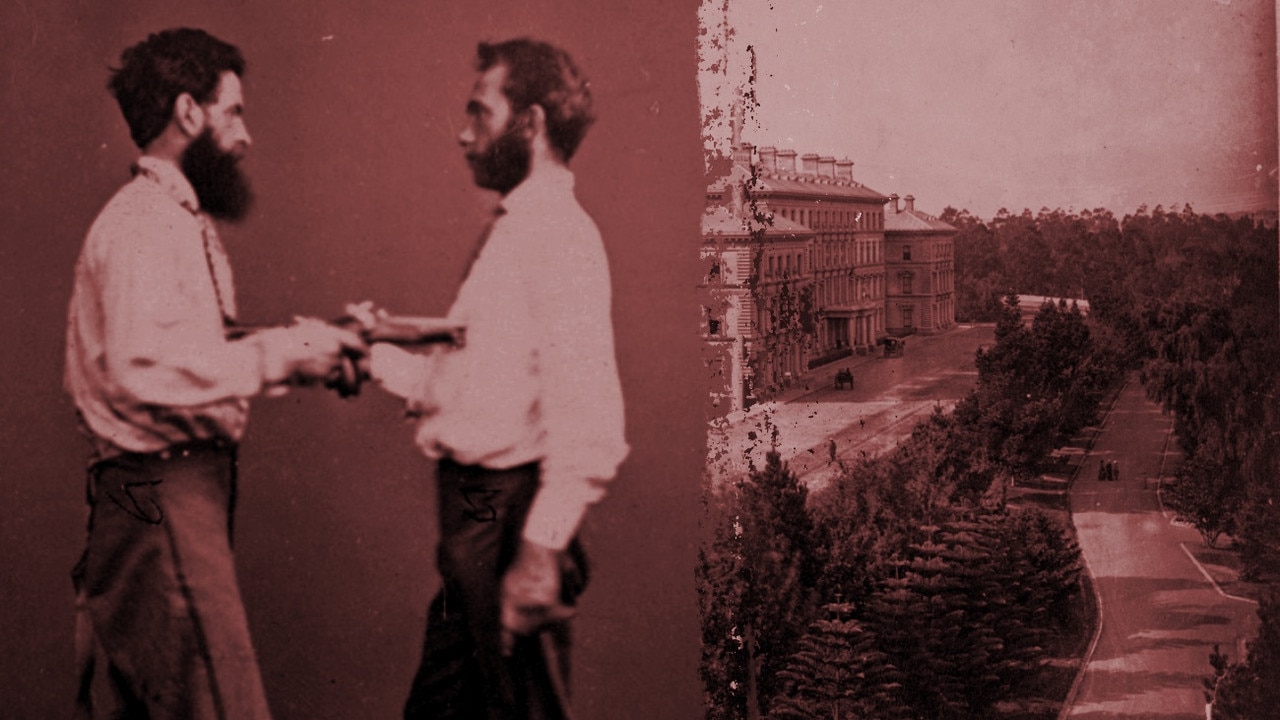What lies ahead for footy of the future?
IF you told footy fans in 1996 they would be watching AFL on their mobile phones and flying to the Gold Coast to watch Gary Ablett play they would have thought you were mad.
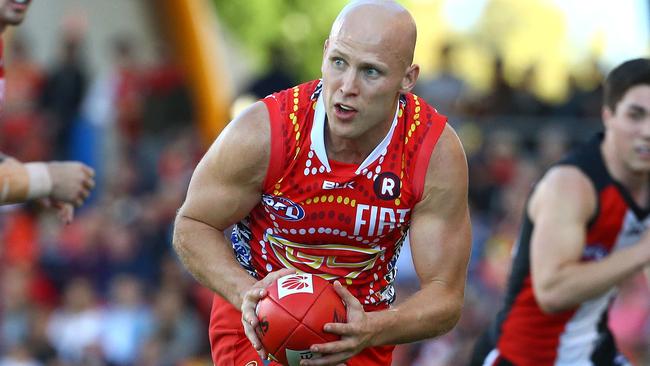
Melbourne
Don't miss out on the headlines from Melbourne . Followed categories will be added to My News.
IF you told footy fans in 1996 they would be watching AFL on their mobile phones and flying to the Gold Coast to watch Gary Ablett play they would have thought you were mad.
Had you suggested to supporters a decade ago the AFL would launch a professional women’s league by 2017 they would have invoked the Darryl Kerrigan clause to “tell ’em they’re dreamin’ ’’.
But the leaps and bounds our great game has made from a suburban state league to a national competition with TV ratings, crowds and profits other codes can only dream of proves how quickly things can change.
If a week is a long time in football, then 10 to 20 years from now the AFL as we know and love it will most likely have changed dramatically once again.
So what lies in front of footy fans of the future?
Will Daisy Pearce’s children be drafted to Melbourne under the mother-daughter rule?
Are fans likely to pack new state-of-the-art stadiums to watch the big men fly amid a swelling Melbourne population tipped to hit 7.5 million by 2026, scanning into matches on tickets downloaded to their watches?
Or will they stay home to watch the game on the latest state-of-the-art technology, frustrated their favourite team was merged, manipulated and sent to the opposite end of the country?
Former AFL chief executive Wayne Jackson reckons tough decisions lay ahead for league headquarters, including the possible relocation of some Melbourne teams interstate or to regional Victoria.
“If they move out of Victoria you could probably move one to Tasmania or one to Darwin,’’ he said.
“You might have eight out of a competition of 20 or so operating out of Melbourne. And of those eight maybe one could operate out of Ballarat or Albury-Wodonga.
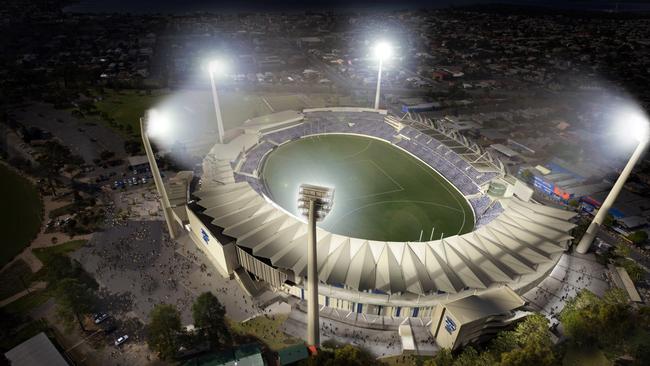
“It’s ridiculous having the amount of Victorian based teams that we have.’’
Mr Jackson — AFL boss from 1996 when Fitzroy played its last game to 2003 when the Brisbane Lions won the third premiership of its three-peat, predicted growth in the interest of suburban, community football.
Accordingly, he said the league needed to invest more in grassroots and country footy to ensure a clear pathway flowed to the elite level.
Now living in South Australia, Mr Jackson predicted the AFL would become a “very strong, elite national competition with grounds to suit’’.
“The fans have to understand that 12,000 in western Sydney is a great crowd, we don’t need 60,000 at every game,’’ he said.
“Some games could be played at smaller, regional grounds — they don’t have to be in Melbourne.”
Collingwood president Eddie McGuire has plans for a grand new $1 billion “events’’ stadium in the heart of Melbourne’s sports precinct central to plans for footy’s future.
While the AFL is also considering a major revamp of Etihad Stadium, the footy powerbroker said a new 60,000-seat stadium on the site of HiSense Arena would have as much impact on Melbourne as the MCG.
Equally, he believes the next 20 years will see a new frontier of exciting player talent burst on to the scene.
“We will see the mass introduction of African recruits and new migrants coming to Australia,’’ McGuire said.
“We saw it with the skills of people like Jesaulenko and Daicos and the Scottish and Irish kids coming in over the years.
“And I just think that with the kids from South Sudan and these places, we could see a change to Australian football similar to what the African-Americans brought to the game of basketball.
“We’re going to get bigger and better Majak Daws who are first-generation Australians who have grown up with the game.
“We’re starting to see it now and I think it’s going to be such a significant change.’’
The undoubted area of AFL growth is the rise and rise of the women’s game.
AFL chief Gillon McLachlan stunned many at a Docklands function in 2015 when he casually proclaimed a professional competition would be up and running within two years.
Chyloe Kurdas was not one of those stunned.
After spending a decade developing female talent for AFL Victoria, she had seen growth of the game among girls first-hand.
Between 2006 and 2013, 108 female teams were formed in Victoria. From 2014-15 that number grew by 110. This year alone 100 new girls’ and women’s teams have taken flight, bringing the total number of Victorian squads to 355.
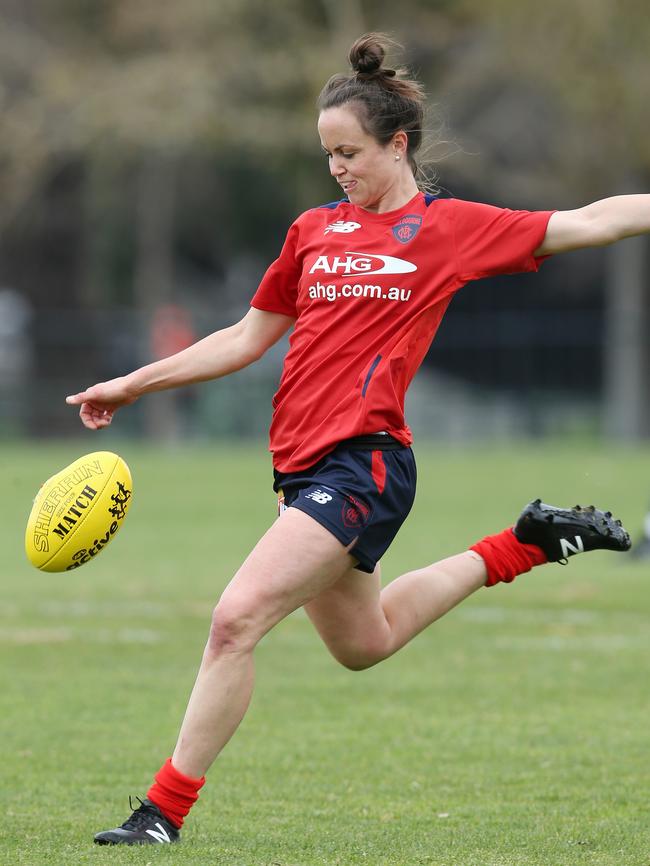
But the former AFL Victoria female development manager predicted those numbers would be dwarfed by an explosion of female participation once the professional league is rolled out.
“While we’ve had tremendous growth I don’t think we’re even close to where it will get to,’’ she said.
“I think it will be the No. 1 sport for women and girls in Australia. I think it will be the best rating women’s sport in Australia and revenue and sponsorship will absolutely substantiate the current investment by the AFL.’’
Professor Russell Hoy, La Trobe University’s sport research and development director, said growth of the women’s game would make the code more popular than ever but strain footy infrastructure and resources.
“It will grow the participation rates enormously and that will place huge pressure on facilities,’’ he said.
“There might not be enough lights, ovals, female change rooms, administrators — all that stuff — as well as extra pressure on volunteers.’’
Prof Hoy predicted codes such as footy and cricket would increasingly clash over shared use of ovals and playing surfaces.
Suburban, country and amateur footy leagues, already live streaming their games, would become more popular and “increasingly look for profits’’.
And as TV and radio coverage of all forms of the game continues to expand, leagues will face unprecedented pressure to attract crowds to live matches.
“If the cost of going goes up and the facilities have crappy car parks why go when you can live stream it to your home?’’ he said.
Former AFL boss Ross Oakley was in charge when the league signed its first pay-TV deal in the early 1990s — before the service was even available in Australia.
He said the fact that deal was inked before it offered any return on investment spoke volumes of the commercial worth of the game which was currently in “very healthy’’ shape.
“The game keeps on growing and improving and developing despite the fact people keep saying soccer is growing and other sports are taking the kids,’’ he said.
Oakley was AFL chief and chairman during arguably its biggest period of change in the 1980s and ’90s which saw the demise of Fitzroy but the birth of Brisbane and the West Coast Eagles.
He said the AFL’s Achilles heel — the fact it was played only in Australia — was also one of its biggest strengths.
Comparing it to the NFL in the US and sumo wrestling in Japan, he said the AFL was one of few stand-alone sports that were clear sporting kings of their country.
“I think the secret is the fact Australian football is the best Australian rules football you can see in the world,’’ he said.
“It is only played here but it’s the best you can get.’’
Oakley said game styles would come and go, along with new ideas, but footy of the future would still uniquely allow players to “handball and kick and mark and run and bounce’’.
The difference may be the way it is consumed.
“We could be watching on our watches or the inside of our glasses,’’ he said.
“You could be just walking around while you watch it but the game won’t change a hell of a lot because it is what people love.’’
Dual North Melbourne premiership player and footy analyst David King agreed in part but said the game played today was “totally different’’ to what we were watching five or 10 years ago.
“That is the challenge for the AFL ... keeping up with the evolution of the game but not changing too much from the game we love and see played down at suburban grounds on the weekend,’’ he said.
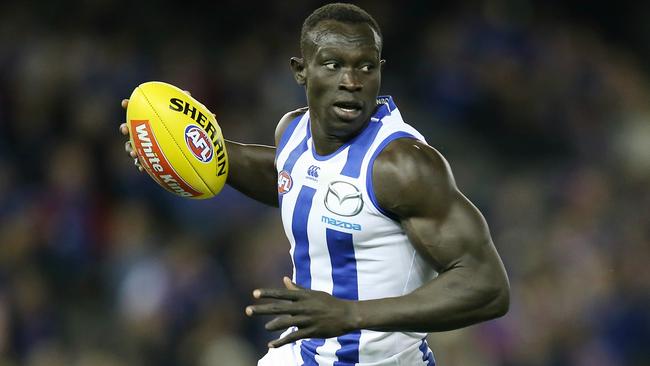
King predicted players of the future would be fitter, smarter, faster and ready to play straight after being drafted.
“The athletes will probably be taller, bigger midfielders, more athletic key position players that have refined decision making and a greater understanding of the game,’’ he said.
He said advances in data tracking, diet and ethical sports science would not just push players to the limit but track when they were likely to hit their peak and pinpoint which parts of games to do it.
The calibre of coaches could also change.
Coaches involved in at least 13 of 18 AFL clubs are currently studying a Masters of Business (MBA) at LaTrobe University, placing a focus on their future as well as their football.
As the game advances, book smarts as well as technical smarts are likely to give coaching boxes the edge they need on game day.
McGuire believes the AFL will become “one of the richest and self-determining leagues in the world’’ in the next 20 years, leading to even better pay for players and more attractive avenues for children playing the game.
He said fast-paced 15 or 16-a-side matches, to be soon trialled during pre-season at league level, had been “kicking around the AFL for years’’ .
But they could catch on in NSW and Queensland where there are more rugby and soccer pitches than AFL grounds.
“I can really see Melbourne over the summer months, after-work games and mixed games as more women become natural with the skills that boys have grown up with in the schoolyard,’’ he said.
“These things will explode. It’s a wonderful time for footy.’’
The AFL, which declined several offers to contribute to this report, has big decisions to face on the make-up of the league, the amount of byes played, fixturing, security, stadiums and fan engagement.
It has already shown in this year’s finals it is not afraid to play matches on Thursdays, at night instead of day or lump fans with a footy-free weekend between the end of the season and September.
Good Friday football — once a taboo subject on such a holy day — now beckons amid a groundswell of support.
And as the AFL continues to look to its US equivalent, the NFL, it seems only a matter of time before the Grand Final too is played under lights at the MCG.
It would upset traditionalists who want the status quo on Australia’s best day of sport to remain, infuriate parents who want their children in bed early and take some getting used to.
But the reboot would satisfy TV networks paying big bucks for the rights and allow a far superior era of entertainment under lights than the cringe-worthy Meatloaf era that still makes AFL executives shudder.
A night Grand Final would push the bidding war for AFL rights to a new stratosphere with TV executives falling over themselves to bring the action to the masses on tech-savvy devices.
We have already gone from black and white to colour to HD on TV. How long until we are watching in 3D, hologram or a format not yet known?
After attending the Superbowl last year, even footy great Kevin Sheedy is among those convinced the AFL Grand Final should try it under lights at least once.
Outgoing MCC chairman Stephen Gough will not see it happen on his watch.
But he points to old photos and news reels showing queues of fans flocking to the MCG with Eskies full of booze to enjoy at the game as proof things change.
He said people would be “horrified’’ if that happened these days but this year’s record combined AFL club membership tally of more than 875,000 showed a family-friendly approach worked.
“Who would have thought? — I hark back to the ’80s — AFL club memberships were really low, 10s and 20s of thousands, and it’s gone to this’’ he said.
“So if the population keeps going, we make the facilities good, if the game is still good, we make our clubs viable.
“Develop it a bit more, then we can be having many more members and more people going to watch these games than ever before.’’
@rolfep


